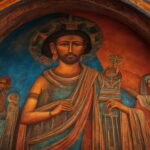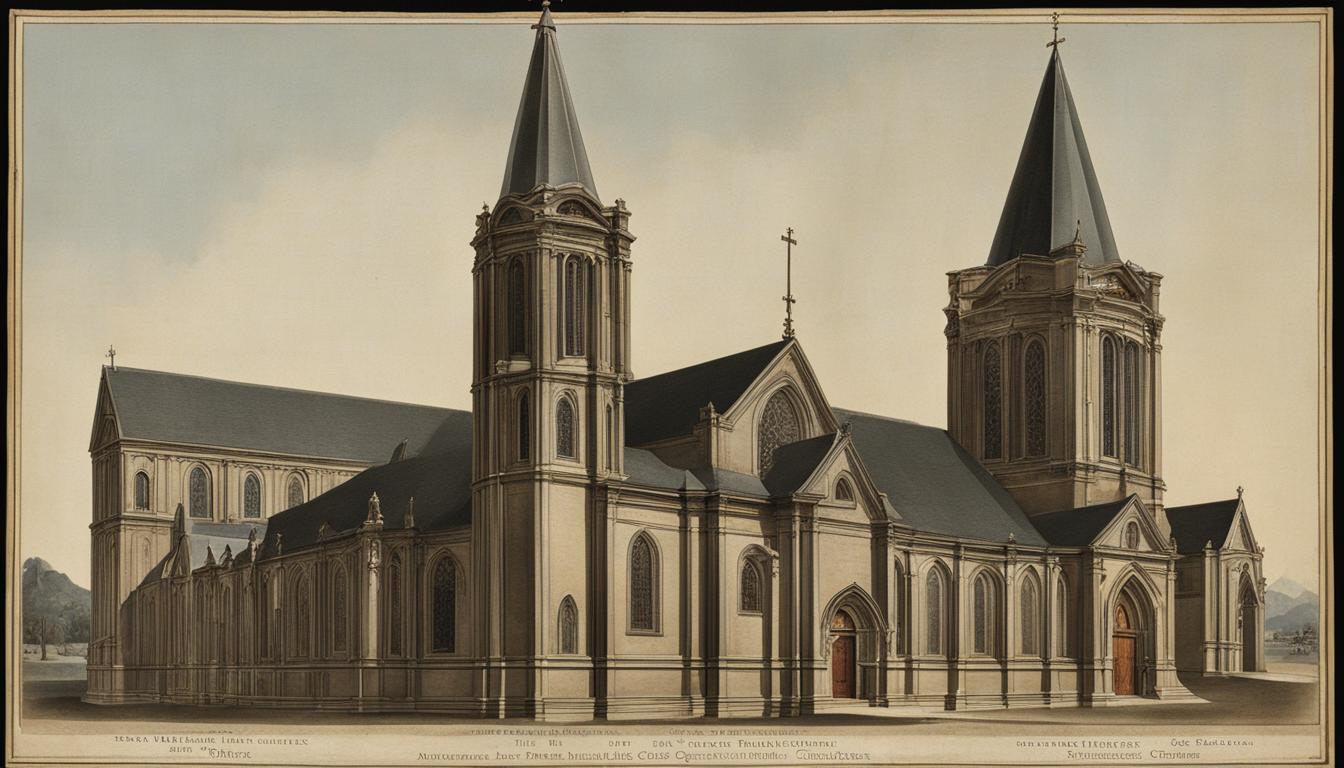The Armenian Apostolic Church has a long and ancient history, tracing its roots back to the apostolic preaching of Saint Bartholomew and Saint Thaddeus. According to tradition, Saint Gregory the Illuminator converted King Trdat to Christianity in the year 301, making Armenia the first nation to embrace Christianity as its state religion. The church played a significant role in the development of Armenian Christian culture and identity, including the invention of the Armenian alphabet and the flowering of original Armenian literature in the fifth century. The Armenian Church has a distinctive doctrinal position, having rejected the Christology of the Council of Chalcedon in 451. Throughout its history, the church has faced challenges such as the Armenian Genocide and the Sovietization of eastern Armenia. However, it has thrived in diaspora communities and is regaining strength in newly independent Armenia.
Key Takeaways:
- The Armenian Apostolic Church traces its origins back to the apostles Thaddeus and Bartholomew.
- The church played a crucial role in the conversion of King Trdat and the establishment of Christianity as the state religion.
- The Armenian Church has a distinct doctrinal position, rejecting the Christology of the Council of Chalcedon.
- The church has made significant contributions to Armenian culture and literature, including the invention of the Armenian alphabet.
- Despite facing challenges, the Armenian Apostolic Church continues to thrive in diaspora communities and in Armenia.
Origins and Founders of the Armenian Apostolic Church
The Armenian Apostolic Church traces its origins back to the apostles Thaddeus and Bartholomew, who preached the Gospel in historic Armenia. According to tradition, the conversion of King Trdat to Christianity in the early fourth century marked a significant turning point in the history of the church. Saint Gregory the Illuminator, revered as the founder of the Armenian Church, played a crucial role in the conversion of the king and the establishment of Christianity as the state religion. This event laid the foundation for the development of the Armenian Apostolic Church.
The conversion of King Trdat and the subsequent establishment of Christianity as the state religion in Armenia firmly rooted the Armenian Church in the country’s history. Saint Gregory the Illuminator’s influence and leadership were instrumental in shaping the early beginnings of the church. His commitment to spreading Christianity and his efforts to establish a strong ecclesiastical structure laid the groundwork for the growth and development of the Armenian Apostolic Church.
“The Armenian Church owes its existence and early growth to the zeal and dedication of Saint Gregory the Illuminator. His conversion of King Trdat was a pivotal moment in Armenian history and solidified the influence of Christianity in the region.”
The Armenian Apostolic Church, with its apostolic roots and the conversion of King Trdat, has played a vital role in the spiritual and cultural identity of the Armenian people. It has persevered through centuries, carrying forward the traditions and beliefs established by its founders, and continues to thrive as a significant institution within the Christian landscape.
The Founders of the Armenian Apostolic Church:
| Founders | Role |
|---|---|
| Saint Bartholomew | One of the apostles who preached the Gospel in historic Armenia |
| Saint Thaddeus | One of the apostles who preached the Gospel in historic Armenia |
| Saint Gregory the Illuminator | Revered as the founder of the Armenian Church, played a crucial role in the conversion of King Trdat and the establishment of Christianity as the state religion |
Key Beliefs and Doctrines of the Armenian Apostolic Church
The Armenian Apostolic Church holds distinct key beliefs and doctrines that shape its theological position. One of the central tenets of the church is its rejection of the Christology defined by the Council of Chalcedon in 451. The church believes that the language used in Chalcedon, which describes Jesus Christ as “in two natures,” undermines the unity of divinity and humanity in Christ. This rejection has led to the communion of the Armenian Church with other Oriental Orthodox churches and its separation from the Orthodox churches associated with Constantinople.
“Our theological position is rooted in the belief that Christ is one nature, fully divine and fully human, without confusion, without change, without division, without separation.”
Another key belief of the Armenian Church is the veneration of saints, who are seen as holy intercessors and role models for the faithful. The church places great importance on the sacraments, which are regarded as sacred rituals that convey the grace of God. The sacraments include baptism, the Eucharist, confirmation, marriage, ordination, and unction. Additionally, the Armenian Church shares the belief in the resurrection of the dead, affirming the hope and promise of eternal life.
The Doctrine of the Armenian Church
- The rejection of the Council of Chalcedon’s Christology
- The veneration of saints and intercessory prayers
- Emphasis on the importance of sacraments
- Belief in the resurrection of the dead
The Armenian Apostolic Church’s doctrinal position sets it apart from other Christian denominations and shapes its approach to faith and spirituality. These beliefs and doctrines have played a crucial role in defining the identity and theological distinctiveness of the Armenian Church throughout its rich history.
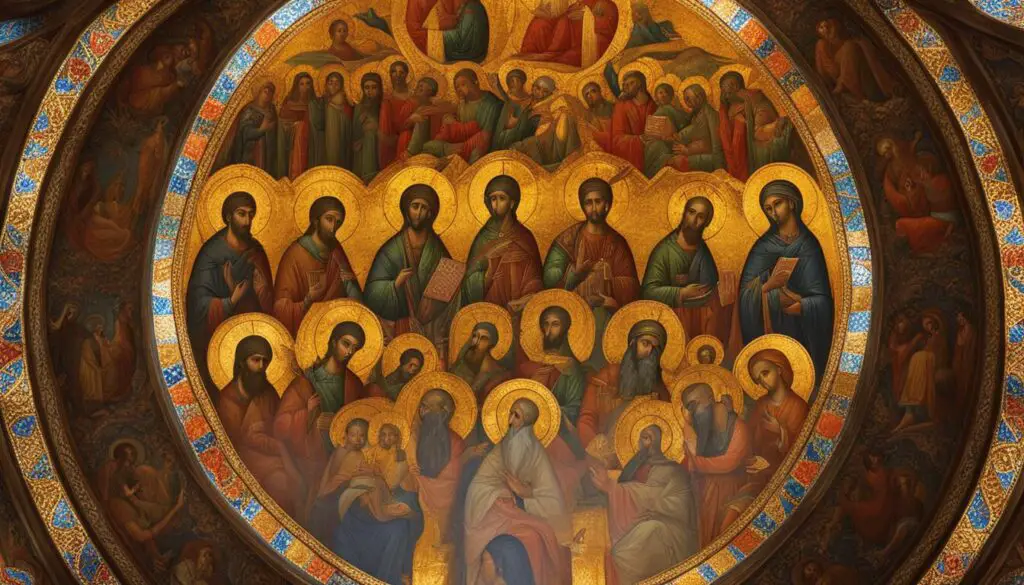
Historical Significance of the Armenian Apostolic Church
The Armenian Apostolic Church holds a significant place in Christian history and has had a profound impact on the development of Christianity as a whole. From its founding in the early fourth century and the conversion of King Trdat to Christianity, the Armenian Church has played a crucial role in the spread and preservation of the Christian faith. Armenia became the first nation to officially embrace Christianity, marking a major milestone in the history of Christianity. This event preceded the Edict of Milan by 12 years, making the Armenian Church a trailblazer in the Christian world.
One of the historical significances of the Armenian Apostolic Church is its contribution to the development of Armenian national identity. Through its centuries-old tradition of cultural and religious practices, the church has helped shape the unique Armenian identity and preserve the rich heritage of the Armenian people. The invention of the Armenian alphabet and the flourishing of original Armenian literature in the fifth century are notable cultural achievements that bear the imprint of the Armenian Church.
“The Armenian Apostolic Church’s historical significance lies not only in its deep roots and long-standing presence but also in its resilience in the face of challenges, such as the Armenian Genocide and the Sovietization of eastern Armenia.”
Furthermore, the Armenian Apostolic Church’s theological distinctiveness, particularly its rejection of the Council of Chalcedon in 451, has had a significant impact on the Christian landscape. This rejection has led to a schism between the Armenian Church and the Orthodox churches descended from Constantinople. The Armenian Church aligns itself with the Oriental Orthodox tradition, distinguishing it from other Christian denominations. The historical significance of this schism lies in the theological influence it has had on the Armenian Apostolic Church and its communion with other Oriental Orthodox churches.
| Key Points | Historical Significance |
|---|---|
| Conversion of King Trdat and establishment of Christianity as the state religion | First nation to embrace Christianity officially |
| Invention of the Armenian alphabet and development of original Armenian literature | Preservation of Armenian cultural heritage |
| Rejection of the Council of Chalcedon | Distinct theological position and communion with Oriental Orthodox churches |
Denominational Split or Schisms in the Armenian Apostolic Church
The history of the Armenian Apostolic Church is marked by a significant denominational split or schism that occurred over a theological disagreement. The schism revolves around the rejection of the Christology of the Council of Chalcedon in 451, which describes the person of Jesus Christ as “in two natures.” The Armenian Church, along with other Oriental Orthodox churches, disagreed with this language, believing that it undermines the unity of divinity and humanity in Christ.
This disagreement led to a separation between the Armenian Church and the Orthodox churches associated with Constantinople. The Armenian Church aligned itself with the Oriental Orthodox churches, forming a distinct branch of Christianity. This schism has endured for over 15 centuries, shaping the identity and theology of the Armenian Church.
Despite the schism, the Armenian Apostolic Church has maintained its unique doctrinal position and continues to thrive as a vibrant faith community. It remains committed to preserving the rich cultural heritage and spiritual traditions that define Armenian Christianity.
Table: Comparison of the Armenian Apostolic Church and Orthodox Churches
| Aspect | Armenian Apostolic Church | Orthodox Churches |
|---|---|---|
| Position on Christology | Rejects the Christology of the Council of Chalcedon | Accepts the Christology of the Council of Chalcedon |
| Communion | Part of the Oriental Orthodox communion | Part of the Eastern Orthodox communion |
| Leadership | Supreme head is the catholicos | Supreme head is the patriarch or metropolitan |
| Liturgy | Celebrated in Classical Armenian | Celebrated in various languages, including Greek and Slavonic |
The denominational split in the Armenian Apostolic Church has shaped its theology, practices, and relationship with other Christian traditions. Despite the differences, both branches of Christianity continue to thrive and make significant contributions to the global Christian community.
Leadership and Governance of the Armenian Apostolic Church
The Armenian Apostolic Church has a hierarchical leadership structure headed by the catholicos, who serves as the supreme spiritual authority and the head of the church. The catholicos is responsible for the governance and administration of the church, overseeing clergy appointments, and guiding the spiritual life of the faithful. The current supreme catholicos is located in Echmiadzin, near the Armenian capital of Yerevan, while another catholicos, descended from the leaders of Sis in Cilicia, is located in Lebanon.
In addition to the catholicos, the Armenian Church has a synod consisting of bishops and clergy who aid in the decision-making process. The synod ensures the smooth functioning of the church and plays a crucial role in addressing matters of doctrine, liturgy, and church affairs. The synod members are elected and appointed by the catholicos, reflecting the collegial nature of governance within the Armenian Apostolic Church.
The leadership and governance structure of the Armenian Church have evolved over time, adapting to changing political and social circumstances. Throughout history, the location of the catholicos has varied, reflecting the shifting centers of political power in Armenia. Despite external challenges, the church has remained resilient and has continued to provide spiritual guidance and support to its followers, both within Armenia and in diaspora communities around the world.
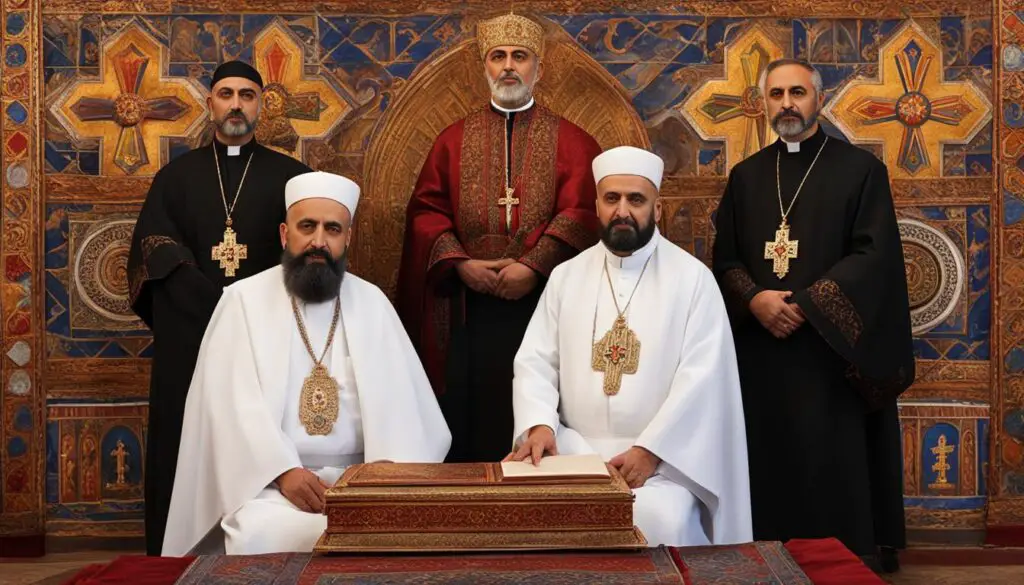
Table: Comparison of Leadership and Governance Structures in the Armenian Apostolic Church
| Position | Responsibilities |
|---|---|
| Catholicos | Serves as the supreme head of the church, responsible for governance, administration, and spiritual leadership. |
| Synod | Consists of bishops and clergy who aid in decision-making and address matters of doctrine, liturgy, and church affairs. |
| Additional Catholicos | Located in Lebanon, descended from the leaders of Sis in Cilicia, and contributes to the leadership and administration of the church. |
The leadership and governance structures of the Armenian Apostolic Church reflect its commitment to tradition, collegial decision-making, and adapting to changing circumstances while upholding the rich heritage of the church.
Worship Practices of the Armenian Apostolic Church
The Armenian Apostolic Church places great emphasis on its worship practices, which are deeply rooted in its rich liturgical tradition. The church’s worship is characterized by its solemnity, reverence, and adherence to ancient rituals. Central to the Armenian Church’s worship is the eucharistic service, known as patarag, which holds a profound significance for its members.
The patarag, or Divine Liturgy, is a complex and deeply symbolic ceremony that commemorates the Last Supper of Jesus Christ. It involves the consecration of bread and wine, which are believed to become the body and blood of Christ. The liturgy is conducted in Classical Armenian, the liturgical language of the church, although some parishes incorporate limited amounts of other languages, such as English or Russian, to accommodate the diverse needs of their congregations.
Another notable aspect of Armenian Church worship is its strong tradition of hymnody. Hymns, known as sharakans, are an integral part of the liturgy and contribute to the spiritual atmosphere of the service. These hymns, often composed by renowned Armenian saints and theologians, are sung in a captivating and melodic manner, reflecting the deep spirituality and devotion of the worshipers.
“The patarag is a beautiful expression of our faith and devotion. It brings us closer to God and strengthens our connection to the divine. The hymns, with their profound lyrics and enchanting melodies, uplift our souls and help us enter into a deeper state of worship.”
Armenian Church Sacraments
In addition to the eucharistic service, the Armenian Apostolic Church recognizes several sacraments as vital components of its worship practices. These sacraments include baptism, confirmation, confession, marriage, ordination, and unction of the sick.
Baptism, known as khachakndoot in Armenian, is the sacrament through which individuals are initiated into the Church and receive the remission of original sin. Confirmation, or the sacrament of chrismation, follows baptism and involves an anointing with holy chrism, signifying the reception of the Holy Spirit.
The Armenian Church also places great importance on confession, the sacrament of penance, which allows believers to seek forgiveness for their sins and receive spiritual guidance from a priest. Marriage, as a sacrament, is a sacred union between a man and a woman, characterized by love, mutual respect, and the blessing of the Church.
| Sacrament | Description |
|---|---|
| Baptism | The sacrament of initiation into the Church. |
| Confirmation | Anointing with holy chrism after baptism to receive the Holy Spirit. |
| Confession | Seeking forgiveness for sins and receiving spiritual guidance. |
| Marriage | The sacred union between a man and a woman, blessed by the Church. |
| Ordination | The sacrament of consecration for clergy, enabling them to serve the Church. |
| Unction of the Sick | Anointing with holy oil for the healing of physical and spiritual ailments. |
The sacraments of ordination and unction of the sick are also recognized by the Armenian Church. Ordination is the sacrament through which individuals are consecrated as clergy, enabling them to serve the Church and its members. The sacrament of unction of the sick, or the anointing of the sick, involves the anointing of the body with holy oil to provide spiritual and physical healing.

Contemporary Influence of the Armenian Apostolic Church
The Armenian Apostolic Church continues to have a profound impact in both Armenia and diaspora communities around the world. Within Armenia, the church plays a crucial role in shaping Armenian national identity and preserving cultural heritage. It provides spiritual guidance and support to the faithful, and is involved in various social and charitable activities. The Armenian Church serves as a focal point for community life and identity in the diaspora, promoting Armenian culture and providing a sense of belonging. It also actively engages in interfaith dialogue and ecumenical cooperation, contributing to global efforts for peace and understanding.
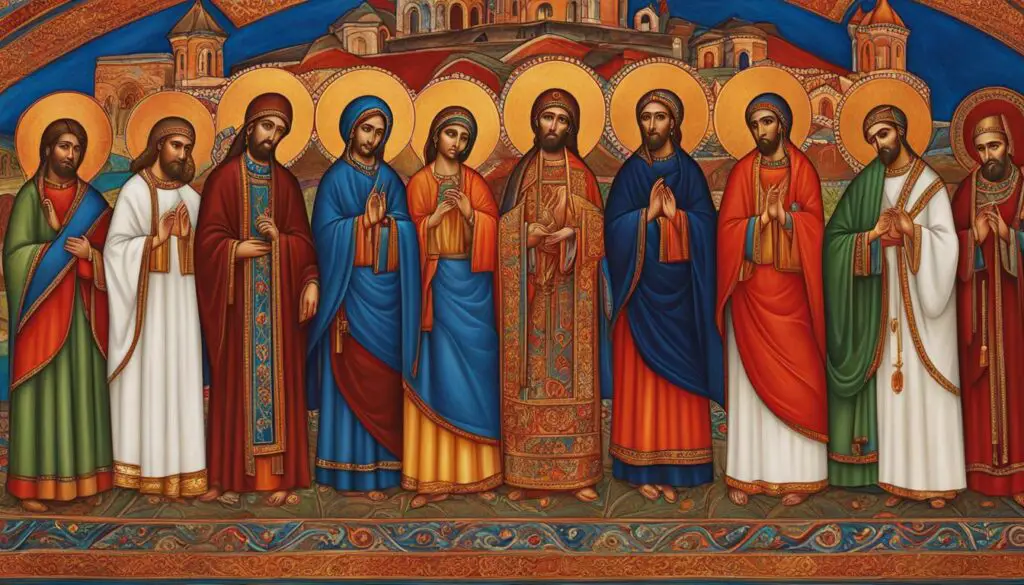
The Armenian Apostolic Church’s influence extends beyond religious and cultural spheres. It has played a significant role in advocating for recognition and justice for the Armenian Genocide, raising awareness about the atrocities committed against the Armenian people in the early 20th century. The church’s efforts have contributed to the recognition of the Armenian Genocide by many countries and international organizations.
In the modern world, the Armenian Church continues to be a voice for justice and human rights. It actively promotes peace and reconciliation, working towards healing the wounds of the past and fostering dialogue between different communities. The church’s longstanding commitment to social justice and its emphasis on compassion and solidarity make it a relevant and influential institution in today’s society.
| Contemporary Influence of the Armenian Apostolic Church | |
|---|---|
| Shaping Armenian national identity | Preserving cultural heritage |
| Spiritual guidance and support | Social and charitable activities |
| Community life and identity in the diaspora | Promoting Armenian culture |
| Interfaith dialogue and ecumenical cooperation | Contributing to global efforts for peace and understanding |
| Raising awareness about the Armenian Genocide | Advocacy for recognition and justice |
| Peacebuilding and reconciliation | Promoting social justice and human rights |
Current World Membership Number and Percentage of World Religions of the Armenian Apostolic Church
The Armenian Apostolic Church has a significant presence worldwide, with an estimated membership of around 9 million individuals. While this number may seem relatively small compared to the global population, it is important to consider the historical and cultural context of the Armenian Church. The Armenian Apostolic Church is deeply intertwined with Armenian national identity and serves as a symbol of cultural heritage and spiritual belonging for the Armenian people.
In terms of the percentage of world religions, the Armenian Apostolic Church represents a fraction of the global religious population. Christianity as a whole comprises approximately 31% of the world’s religious adherents. Within the Christian tradition, the Armenian Apostolic Church holds a distinctive place as one of the Oriental Orthodox churches, which encompass a smaller branch of Christianity compared to Roman Catholicism, Eastern Orthodoxy, and Protestantism.
Despite its smaller numbers in comparison to other Christian denominations, the Armenian Apostolic Church continues to play a vital role in the spiritual lives of its followers and in the preservation of Armenian cultural heritage. It is a testament to the enduring influence and significance of the church that it has survived and thrived throughout centuries of history and continues to be a source of strength and identity for millions of Armenians around the world.
| World Religion | Approximate Membership | Percentage of Global Religious Population |
|---|---|---|
| Armenian Apostolic Church | 9 million | ~0.12% |
| Christianity (all denominations) | 2.4 billion | 31% |
| Islam | 1.8 billion | 24% |
| Hinduism | 1.2 billion | 16% |
| Buddhism | 535 million | 7% |
| Judaism | 14 million | 0.2% |
The table above provides an overview of the approximate membership numbers and the percentage of the global religious population for the Armenian Apostolic Church and other major world religions. It is important to note that these figures are estimates and may vary based on different sources and methodologies. However, they offer a general perspective on the relative size and significance of the Armenian Apostolic Church within the broader religious landscape.
Conclusion
The Armenian Apostolic Church has a rich and significant history that spans centuries. From its origins in the apostolic preaching of Thaddeus and Bartholomew to its role in the conversion of King Trdat and the development of Armenian Christian identity, the church has played a pivotal role in Armenian history and culture.
The rejection of the Council of Chalcedon and the subsequent schism from the Orthodox churches have defined the church’s distinct theological position. Despite facing challenges such as the Armenian Genocide and Sovietization, the church has persevered and continues to thrive in diaspora communities and in Armenia itself.
With its unique liturgical traditions, strong sense of community, and commitment to preserving Armenian heritage, the Armenian Apostolic Church remains a vital institution in the global Christian landscape.
FAQ
What is the history of the Armenian Apostolic Church?
The Armenian Apostolic Church has a long and ancient history, tracing its roots back to the apostolic preaching of Saint Bartholomew and Saint Thaddeus. It played a significant role in the development of Armenian Christian culture and identity, including the invention of the Armenian alphabet and the flowering of original Armenian literature in the fifth century.
Who founded the Armenian Apostolic Church?
According to tradition, the Armenian Apostolic Church traces its origins back to the apostles Thaddeus and Bartholomew, who preached the Gospel in historic Armenia. Saint Gregory the Illuminator, who is revered as the founder of the Armenian Church, played a crucial role in the conversion of King Trdat and the establishment of Christianity as the state religion.
What are the key beliefs of the Armenian Apostolic Church?
The Armenian Apostolic Church has a distinctive doctrinal position, including the rejection of the Christology of the Council of Chalcedon in 451. Other key beliefs and doctrines of the Armenian Church include the veneration of saints, the importance of sacraments, and the belief in the resurrection of the dead.
What is the historical significance of the Armenian Apostolic Church?
The Armenian Apostolic Church played a crucial role in the spread of Christianity and the preservation of Armenian national identity. The conversion of King Trdat and the establishment of Christianity as the state religion marked significant milestones. The church also made contributions to Armenian cultural and literary heritage and has faced challenges such as the Armenian Genocide and Sovietization.
Has the Armenian Apostolic Church experienced any schisms?
Yes, the main denominational split in the Armenian Apostolic Church occurred as a result of the rejection of the Christology of the Council of Chalcedon. This disagreement led to a separation between the Armenian Church and the Orthodox churches associated with Constantinople, forming a distinct branch of Christianity.
Who leads and governs the Armenian Apostolic Church?
The Armenian Apostolic Church is led by the catholicos, who serves as the supreme head of the church. The location of the catholicos has varied throughout history, with the current supreme catholicos located in Echmiadzin, near Yerevan. Another catholicos, descended from the leaders of Sis in Cilicia, is located in Lebanon.
What are the worship practices of the Armenian Apostolic Church?
The Armenian Apostolic Church has a rich liturgical tradition centered around the eucharistic service, known as patarag. The liturgy is celebrated in Classical Armenian, and the church has a strong tradition of hymnody. The celebration of Christmas and Epiphany together on January 6 is another distinctive aspect of Armenian Church worship.
What is the contemporary influence of the Armenian Apostolic Church?
The Armenian Apostolic Church continues to exert significant influence within Armenia and in diaspora communities around the world. It plays a vital role in shaping Armenian national identity, preserving cultural heritage, and engaging in interfaith dialogue and ecumenical cooperation.
How many members does the Armenian Apostolic Church have worldwide?
The exact number of members of the Armenian Apostolic Church worldwide is difficult to determine, but it is estimated to be around 9 million individuals who identify as Armenian Apostolic.
What is the percentage of the Armenian Apostolic Church in world religions?
The Armenian Apostolic Church represents a small fraction of Christianity, which comprises approximately 31% of the global religious population.









